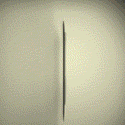
Lucasfilm’s Indiana Jones and the Dial of Destiny, which is now playing in theaters, continued the franchise’s tradition of globetrotting adventures by filming on location in Morocco, Sicily, and the U.K.
Director and co-writer James Mangold emphasized the importance of having a diverse array of backdrops as part of the Indiana Jones experience, which fans have come to love since the series began with Raiders of the Lost Ark in 1981.
Mangold collaborated with the production team, including production designer Adam Stockhausen, director of photography Phedon Papamichael, special effects supervisor Alistair Williams, and visual effects supervisor Andrew Whitehurst, to create dynamic action sequences and awe-inspiring visuals that have become a hallmark of Indiana Jones films.
The team constructed large set-pieces to give Harrison Ford’s iconic character, Indiana Jones, a proper sendoff in his final adventure. These set pieces included a thrilling train sequence set in 1944 Germany, a horseback pursuit through a ticker tape parade in New York, a frenzied tuk-tuk chase through the streets of Tangier, and a tense underwater dive in Greece, among others.

The decision to film on real-world locations and practical sets added authenticity to the film and helped the cast get into character. Phoebe Waller-Bridge, who joined the franchise as Helena Shaw, mentioned how each location had its personality, with Sicily being beautiful and serene, Morocco full of bustling activity, and Glasgow having an energetic atmosphere.
Stockhausen strived to match the visual grandeur of the real-world locations with the richly detailed sets constructed at Pinewood Studios near central London. The explosive opening sequence was a prime example of the film’s blend of impressive locations, like Bamburgh Castle and the North Yorkshire Moors Railway station in England, with inventive set designs.
The story spans different periods, and the filmmakers meticulously planned the New York City parade and chase scenes, which required considerable preparation in Glasgow, Scotland, doubling as Manhattan.

REELated:
The film also took audiences to Morocco, where exteriors were shot in Fez, and to the Hotel L’Atlantique, where Helena auctions off her loot, built at Pinewood. Additionally, Sicily stood in for Greece, where Indiana and Helena dive into vast caverns to follow the trail of Archimedes, with Renaldo joining them.
Ford stressed the critical importance of filming on location to fully immerse the audience in different cultures and places, ensuring that the film’s practical sets and real-world locations brought authenticity and a unique feeling to the movie.

“You want to go to many places around the world. You want to feel these places, you want to smell them, as it were,” the actor explains. “And so, we want as much as possible to have practical sets, practical locations where there’s a different culture, where there’s a different feeling to the place.”
The film has grossed a respectable $357,407,504 worldwide.









